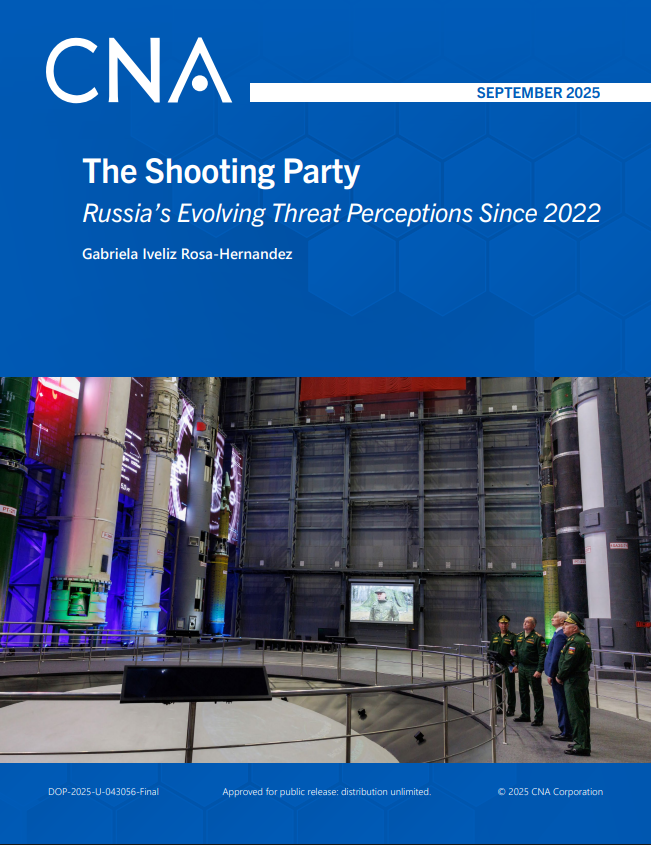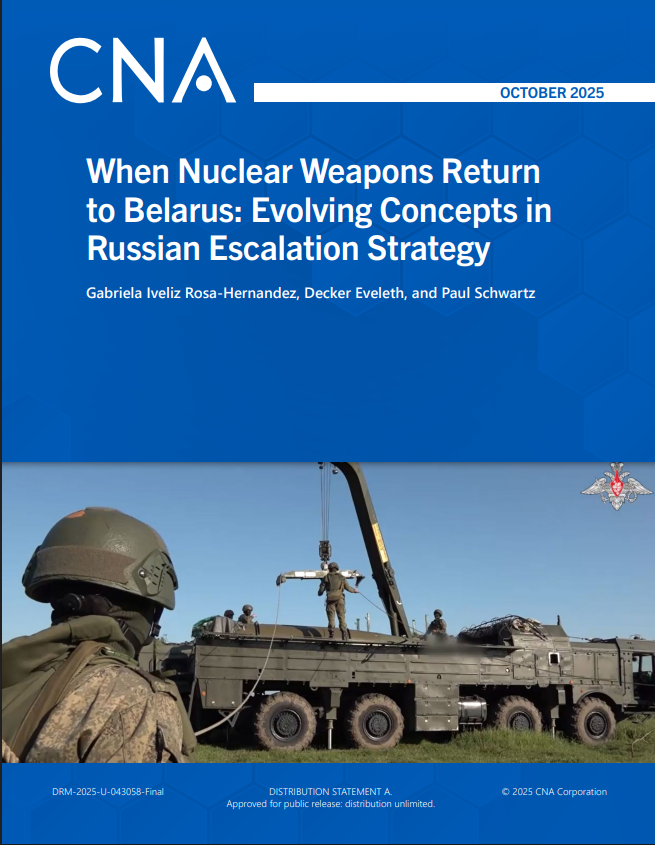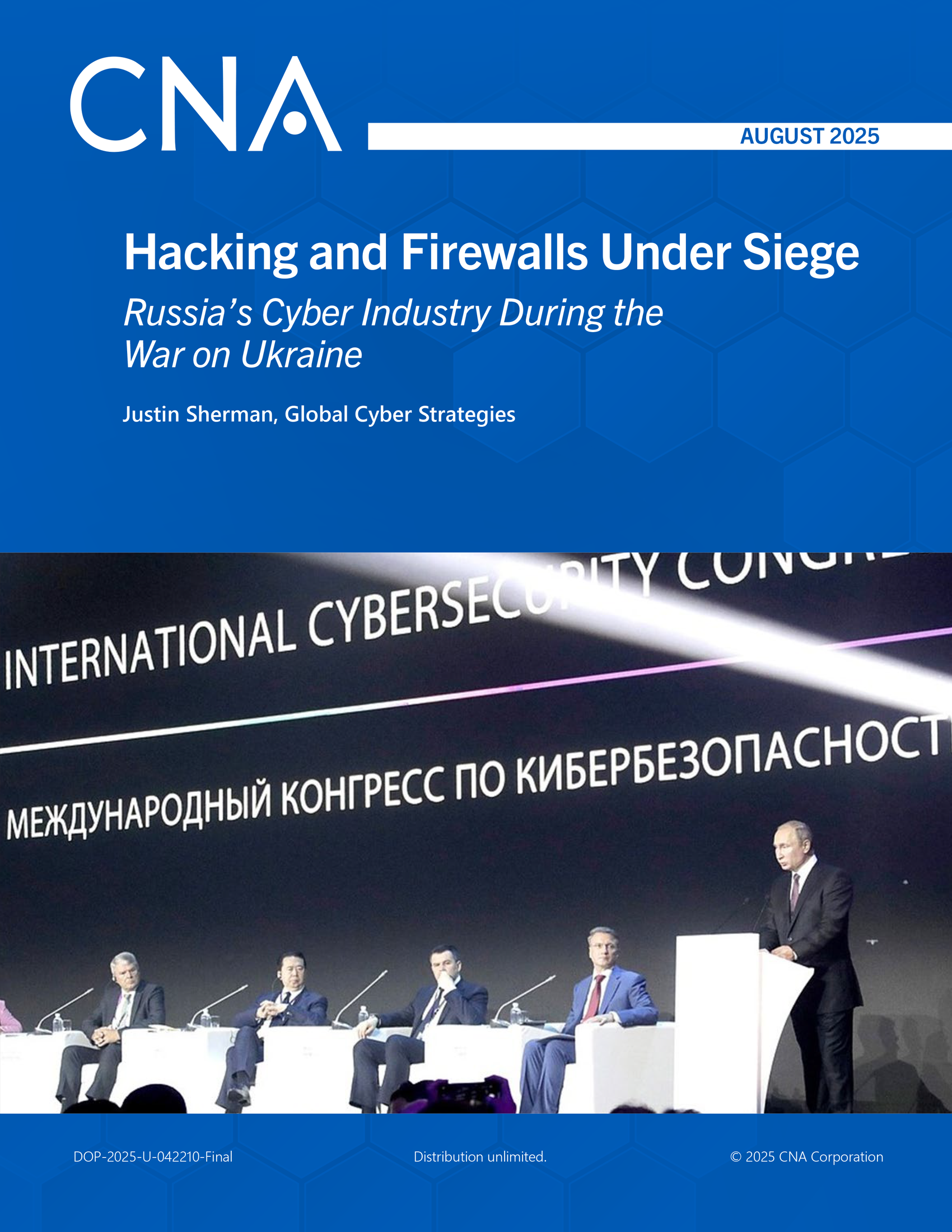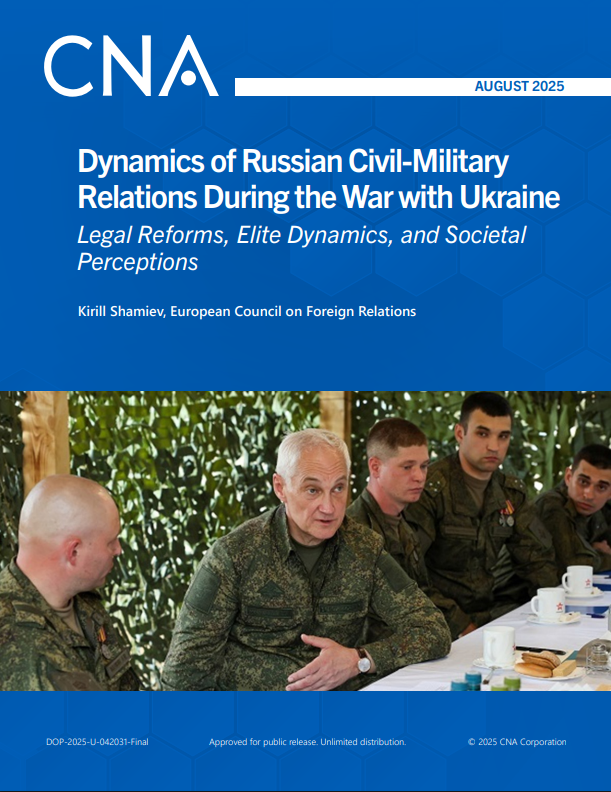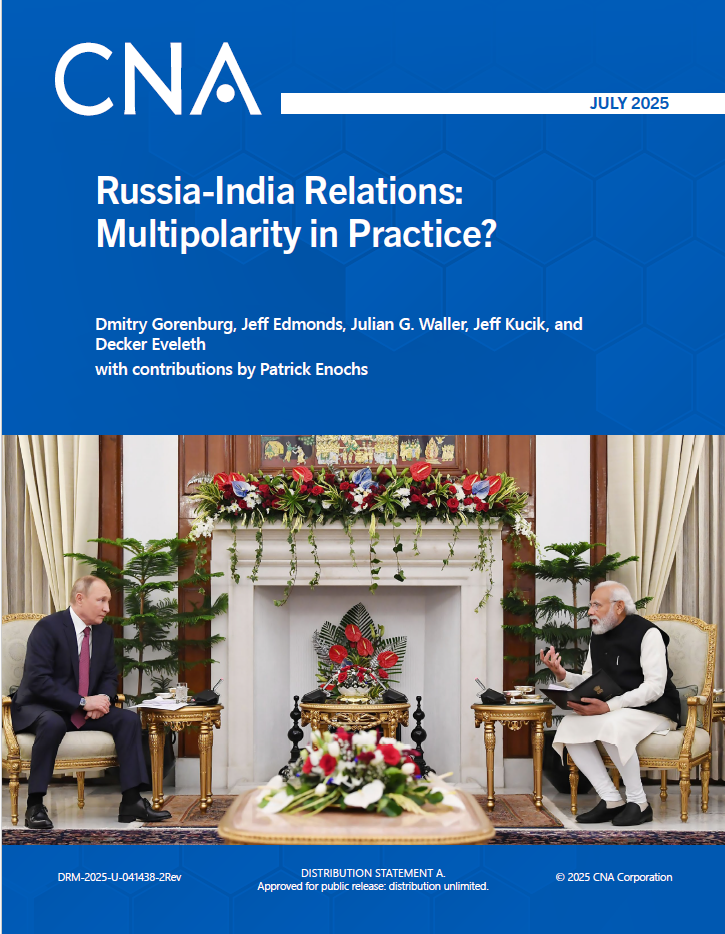Executive Summary
Although Russian operations in Ukraine reveal a degree of adaptability, the war has not reshaped Russia’s broader framework of threat perceptions. Rather than introducing fundamentally new assessments, current military discourse tends to reinterpret established concerns through the lens of ongoing conflict. In effect, Russia’s experience in Ukraine has not altered Russia’s security anxieties but has instead amplified and reinforced them.
The war on Ukraine has not led to new perspectives among Russian military thinkers on threat perceptions for multiple reasons. First, Russia’s understanding of internal and external threats and dangers to its security has not changed. Second, given the attrition of its military in Ukraine, Russian theorists perceive Russia to be even more disadvantaged than before in terms of the conventional military balance vis-à-vis the North Atlantic Treaty Organization (NATO). Third, Russian military thinkers do not appear to have changed their assumptions about what a NATO-Russia conflict would look like. Discussions among Russian military thinkers about significant threats from the US and NATO are still linked primarily to the scenario of a massive aerospace attack during the initial period of war. According to them, the main mitigation proposed to counter these capabilities is that Russia should continue to invest in asymmetric capabilities.
This report concludes that Russian military leaders remain chiefly preoccupied with two long-standing US programs that have shaped their strategic planning for years. The first is the development of Prompt Global Strike (PGS), designed to enable the United States to deliver precision conventional strikes anywhere in the world within an hour, without reliance on forward-deployed forces. Russian strategists continue to fear that such a capability could neutralize both their offensive and defensive strategic deterrent forces before they could be employed during the initial period of war. This concern is embedded in the broader scenario of a massed aerospace attack, a staple of Soviet military thinking, in which the US conducts massed decapitation strikes against national command-and-control systems and the strategic nuclear force, executed through both group and individual tactical-level strikes. The proposed Russian response remains focused on escalation control and decisive action to inflict “unacceptable damage” on an adversary.
The second focus of concern is the development of US ballistic missile defense (BMD) capability, particularly the Golden Dome project, a multilayered national defense system that combines current US missile defense programs intended to counter missile threats. Even though many observers doubt that the project can be implemented as envisioned, for now, Russian military-analytical thinking about Golden Dome remains consistent with previous assumptions about the development of US BMD capabilities. In response, many argue for sustained investment in offensive strategic systems capable of overcoming or saturating US missile defenses. Others pose that Moscow should bolster its own missile defense capabilities.
Space threats are also significant for Russian military thinkers, who emphasize the importance of maintaining access to space-based military information while denying it to adversaries. The participation of Western commercial space firms in supporting Ukraine has reinforced Russian fears about the role of space in modern warfare. To address these challenges, Russian military thinkers advocate for developing space systems that ensure the effective use of nuclear weapons and troop formations, establishing rapid-response orbital launch capabilities, and leveraging space assets to support ground and naval forces.
Although Russia’s security concerns about US military capabilities remain consistent, it now extends these anxieties to the prospect of US deployments in Finland and Sweden, which has further intensified and magnified their earlier apprehensions. Secondary concerns include the possible proliferation of US strike capabilities in eastern Europe, as these capabilities could affect Russia’s military assets in the Leningrad military district. Russian military thinkers believe that Finland and Sweden’s entry into NATO bolsters NATO’s capacity and creates new challenges for Russia’s force planning.
Russian military thinkers interpret the substantial military assistance provided to Ukraine by the US and its allies as a broader Western strategy aimed at weakening Russia. They view the supply of long-range strike weapons as a signal that the West is increasingly willing to risk direct confrontation with Russia. Even so, the Russian military does not appear to believe that these capabilities are infallible. Instead, military thinkers reflect the symbolic importance of US strike assets in what Russia considers to be its near abroad as they stress the risks of escalation between the US and Russia. Parallel to concerns over Western strike systems, Russian strategists are increasingly alarmed by the expanding offensive capabilities of Ukraine itself. They are especially concerned by Ukraine’s expanding ability to carry out offensive operations within Russian borders. In their view, Ukraine increasingly serves as a forward base for potential Western attacks against Russia.
In Russian military thought, Western policies are interpreted as evidence of an emerging long-term standoff with Russia. Despite its own nuclear rhetoric and violations of arms control agreements, Moscow remains deeply concerned about the weakening of the nuclear taboo and the possible deployment of intermediate-range nuclear forces in Europe. Russian military thinkers are worried about the potential increase in the US nuclear arsenal. This belief has reinforced their views on which NATO activities constitute a threat to Russia’s security and underscored the importance of maintaining and enhancing Russia’s strategic deterrence capabilities.
Download reportApproved for public release: distribution unlimited.
Details
- Pages: 36
- Document Number: DOP-2025-U-043056-Final
- Publication Date: 9/30/2025
